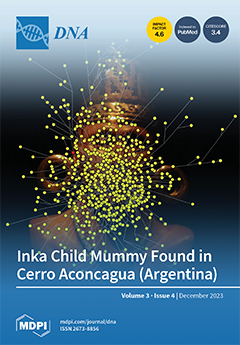Teratozoospermia, a complex male fertility disorder affecting sperm morphology, has been linked to
AURKC,
SPATA16, and
SUN5 gene defects. However, the sheer volume of SNPs in these genes necessitates prioritization for comprehensive analysis. This study focuses on the often-overlooked untranslated region
[...] Read more.
Teratozoospermia, a complex male fertility disorder affecting sperm morphology, has been linked to
AURKC,
SPATA16, and
SUN5 gene defects. However, the sheer volume of SNPs in these genes necessitates prioritization for comprehensive analysis. This study focuses on the often-overlooked untranslated region (UTR) variants in these genes, aiming to assess their association with teratozoospermia and prioritize them. We employed a multi-step filtering process, including functional significance assessment (RegulomeDB, 3DSNP v2.0, SNPinfo (FuncPred)), evaluation of gene expression impacts in testis tissue using GTEx, and assessment of miRNA binding site effects (PolymiRTS Database 3.0, miRNASNP v3). Additionally, we used SNPnexus to evaluate their conservation and association with diseases. In
AURKC, we identified six UTR SNPs (rs11084490, rs58264281, rs35582299, rs533889458, rs2361127, rs55710619), two of which influenced gene expression in testis, while others affected the binding sites of 29 miRNAs or were located in transcription-factor binding sites. Three of these SNPs were also found to be associated with spermatogenic failure according to previous studies indicating a potential regulatory role in teratozoospermia, too. For
SPATA16, two 3′ UTR variants, rs146640459 and rs148085657, were prioritized, with the latter impacting miRNA binding sites. In
SUN5, three 3′ UTR variants (rs1485087675, rs762026146, rs1478197315) affected miRNA binding sites. It should be noted that none of the above variants was identified in a conserved region. Our findings shed light on the potential regulatory roles of these SNPs in teratozoospermia and lay the foundation for future research directions in this area.
Full article



